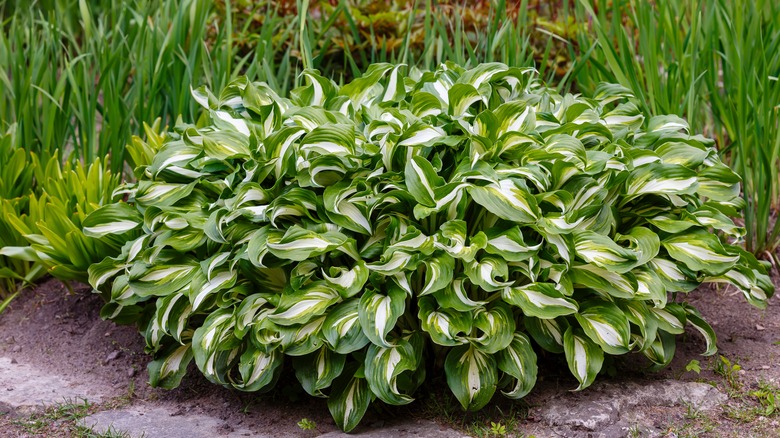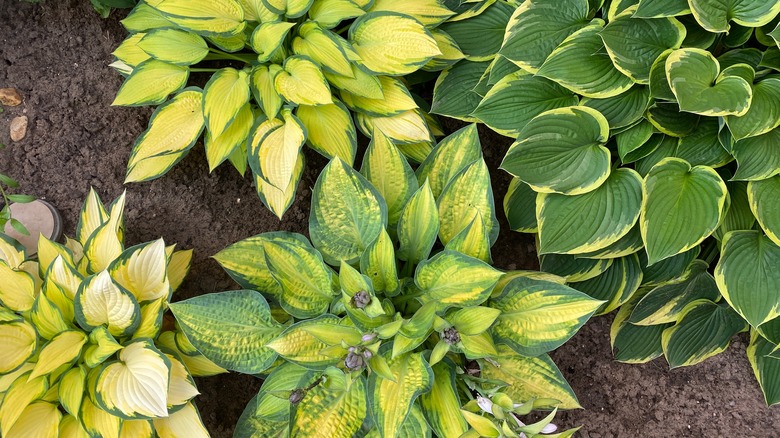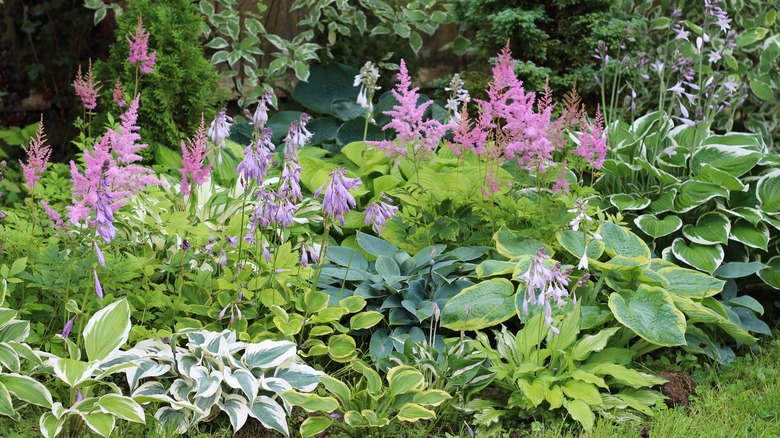Our Gardening Expert Warns To Avoid This Major Mistake When Growing Hostas
With their beautiful foliage and the overall ease of growing and caring for them, hostas tend to be an easy addition to a garden. Hostas can provide a lot of vibrancy to your garden and flowerbeds, whether you use them as a border or to fill in open areas where other plants don't seem to grow. Though they're not necessarily the most time-consuming or challenging plants to grow, some mistakes may limit the overall success of these plants.
To find out what makes it hard for them to grow in some cases, we turned to Rhonda Kaiser, the founder and content creator at Southern Home and Farm. Whether you know her from her stunning Instagram photos or the hands-on help on her site, Kaiser has a few tips and tricks about managing hosta success in your garden. In an exclusive interview with House Digest, we asked what the most common mistake is with these plants. She says, "The biggest mistake I see regarding hostas is some new gardeners are unaware that few varieties of hostas are sun-tolerant plants. Planting them in full sun will not only cause leaf burn and scorch but will ultimately lead to diminished growth (and color) or their demise." When it comes to how to successfully care for hosta plants, she has a simple recommendation. "To avoid scorch, simply plant in a shady location in well-drained, slightly acidic soil, with plenty of organic matter."
How do you know what hostas really need?
Here's what's really challenging about hostas. There are thousands of different species of them out there, various hybrids, and numerous hosta cultivators that, ultimately, may need slightly different needs. If your hosta isn't doing well, pinpointing what is wrong could be a challenge. In her exclusive interview with House Digest, Rhonda Kaiser gave us some clarity on how to know what your plant actually needs. "I encourage new gardeners to read the plant care tags that come with plants to learn more about specific planting needs. Oftentimes, these tags are thrown away, but they always contain valuable information, so be sure to read them!" Before you ditch the tag, read it and potentially jot down some notes. She adds, "These tags are very informative and include planting requirements such as sun/shade, watering, mature plant size, hardiness, and space requirements, so you can plan accordingly."
There are other potential causes of problems with hostas, but these tags often offer the insight you need to manage them. Kaiser offers an example. "Provide adequate space between plants (typically 1-3 inches) and use drip irrigation versus overhead watering to deter disease. Aim for consistent watering that keeps the soil evenly moist." These tips can help prevent disease and pest infestations.
Other strategies for getting outstanding results from hosta plants
Though these are low-maintenance perennials, a few things can influence the overall health and growth of the plants. Rhonda Kaiser shared some additional strategies that might help pinpoint problems you are having in her exclusive interview with House Digest. "Nighttime insects and disease can also create problems for hosta lovers," she begins. "Organic and non-organic applications are also available at local hardware stores to help alleviate these issues. If disease is present, remove any damaged leaves and discard them. As with any plant, ensure to top off with a lawyer of mulch to retain moisture and deter weeds. A 2-3-inch layer of mulch is best."
You can use hostas in many gardens to create a variety of benefits. Kaiser recommends, "Try using several varieties of hostas for beautiful combinations of foliage (both variegated and non-variegated) and blooms." By doing this, you're creating a stunning backdrop for any other plants in the area, too. "Another benefit of planting hostas to the garden is their blooms attract pollinators to the garden, such as hummingbirds and butterflies," she notes. That's a great way to support the health of other plants.
"Do remove spent flower stalks after blooming to encourage new growth. Also, be sure to plant in odd numbers. It makes more of a visual impact. This rule can be applied to any design principle such as floral design, landscape design, or décor styling as well!" she shares.


